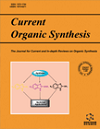
Full text loading...
We use cookies to track usage and preferences.I Understand
Allelopathy related to a positive or negative impacts on one type of plant, by a chemical produced by another type of plant such as weeds, and different kinds of chemicals are hydroxamic acids, phenolics, and short-chain fatty acids. The potential allelopathic impacts of weeds is directly associated to the plan species used, as well as to the concentration of the aqueous extract available in the environment.
The present research manuscript attempts to find and identify the allelopathic interaction of aquatic extracts from dry shoots and seeds of mallow (Malva sylvestris L.) on germination, seedling growth and development of three cultivars of maize. Maize seeds (Zea mays L.) were obtained as seed material: three maize seed cultivars were KSC 704 (Cultivar 1), KSC 500 (Cultivar 2), and KSC 302 (Cultivar 3). The aqueous extracts of mallow shoots and seed, in concentration of 1, 3, 5%, were made from the dried and crumbled above-ground plant parts. The influence of plant dosage was significant on seedling vigour index (SVI), coefficient of the rate of germination (CRG), total germination (T50), germination energy (GE), mean germination time (MGT), germination index (GI), inhibition percentage (IP), fresh mass, dry mass, relative water content (RWC), and total water content (TWC). Different plant parts had meaningful influence on SVI, GI, MGT, CRG, GE, and IP. The impacts of cultivar on T50, IP, RWC, fresh mass, dry mass and TWC were significant. Along with the increase in the concentration of allelopathic components, a decrease in the germination activity of all tested maize cultivars was observed.
The highest SVI was related to control treatment followed by one and three percentage of plant dosages. KSC 704 obtained the maximum CRG and GE, and the minimum one was related to KSC 500. Three percentage of plant dosage has obtained the highest value of CRG and GE. The maximum and the minimum T50 was related to KSC 302 and KSC 704, respectively. The lowest values of GI and MGT was related to KSC 500, and the maximum values are related to KSC 704. While the maximum IP, RWC, fresh mass, dry mass and TWC was related to KSC 704, the lowest values were achieved in utilization of KSC 500. The RWC was the highest for seedlings grown on the 5% extract.
The information of this article can be useful in the conditions of the threat of maize seedlings wit the mass appearance of mallow.

Article metrics loading...

Full text loading...
References


Data & Media loading...

